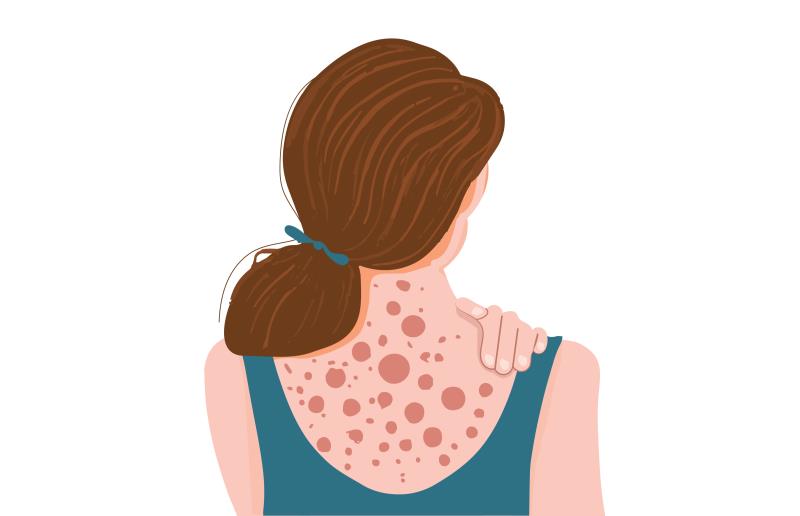Prurigo Nodularis is a chronic skin condition characterized by the presence of firm, itchy nodules. This condition can significantly impact the quality of life due to the intense itching and the appearance of the nodules, which often leads to scratching and subsequent skin damage. Prurigo Nodularis can occur at any age but is most commonly seen in adults. The exact cause is not well understood, but it is often associated with other skin diseases, systemic conditions, or psychiatric disorders.
Table of Contents
Symptoms and Diagnosis
The primary symptom of Prurigo Nodularis is the development of multiple, hard nodules on the skin, often accompanied by severe itching. These nodules can be hyperpigmented or skin-colored and vary in size. Common areas affected include the arms, legs, and upper trunk. Diagnosis is primarily clinical, based on the appearance of the lesions and patient history. A skin biopsy may be performed to rule out other conditions and confirm the diagnosis.
Effective Treatments for Prurigo nodularis
Topical Treatments
Topical treatments are often the first line of defense against Prurigo Nodularis. These include:
- Corticosteroids: Potent corticosteroids can reduce inflammation and itching. They are usually applied directly to the nodules.
- Calcineurin Inhibitors: Tacrolimus and pimecrolimus are alternatives to corticosteroids that can be used for long-term management without the risk of skin thinning.
- Capsaicin Cream: This can help reduce itching by desensitizing the skin’s nerve endings.
Systemic Therapies
For more severe or widespread cases, systemic therapies may be required:
- Antihistamines: These can help manage itching, although they are often more effective for other types of itch.
- Immunosuppressive Agents: Drugs like methotrexate or cyclosporine can be used in severe cases where other treatments have failed.
- Thalidomide: This is effective in some cases but is used with caution due to potential side effects.
Phototherapy
Phototherapy involves exposing the skin to ultraviolet light under medical supervision. Narrowband UVB and PUVA (psoralen plus UVA) are common types used to treat Prurigo Nodularis. This treatment can help reduce itching and improve the appearance of nodules.
Lifestyle and Home Remedies
Moisturization
Keeping the skin well-moisturized is crucial in managing Prurigo Nodularis. Use fragrance-free, hypoallergenic moisturizers to prevent further irritation. Apply moisturizers immediately after bathing to lock in moisture.
Avoiding Triggers
Identifying and avoiding triggers that worsen the condition is important. Common triggers include:
- Stress: Stress management techniques like meditation, yoga, or counseling can be beneficial.
- Irritants: Avoid harsh soaps, detergents, and fabrics that can irritate the skin.
- Infections: Treat any underlying skin infections promptly to prevent exacerbation.
Behavioral Therapies
Scratching can become a habitual response to itching, which worsens the condition. Behavioral therapies, including habit reversal training and cognitive-behavioral therapy (CBT), can help patients break the cycle of scratching.

Innovative Treatments and Research
Research is ongoing to find more effective treatments for Prurigo Nodularis. Some of the promising areas include:
Biologic Therapies
Biologic drugs, which target specific parts of the immune system, are showing promise in treating Prurigo Nodularis. Dupilumab, an IL-4 receptor antagonist, has been found effective in reducing itching and the number of nodules in clinical trials.
Neurokinin-1 Receptor Antagonists
These drugs block the action of substance P, a neuropeptide involved in transmitting the itch signal. They are being investigated for their potential to reduce itching in Prurigo Nodularis.
JAK Inhibitors
Janus kinase (JAK) inhibitors, which interfere with the activity of certain enzymes involved in the inflammatory process, are also being studied as a treatment option for Prurigo Nodularis.
Conclusion.
Managing Prurigo Nodularis requires a comprehensive approach that includes topical and systemic treatments, lifestyle modifications, and possibly newer therapies as they become available. Close collaboration with a healthcare provider is essential to develop an effective treatment plan tailored to individual needs. Early intervention and treatment adherence can help improve symptoms and enhance the quality of life for those affected by this challenging condition.


Leave a Comment